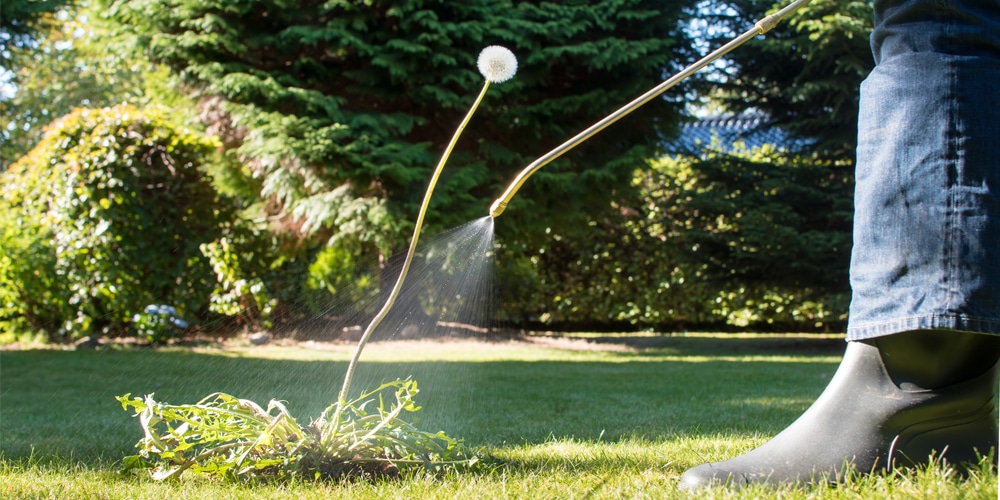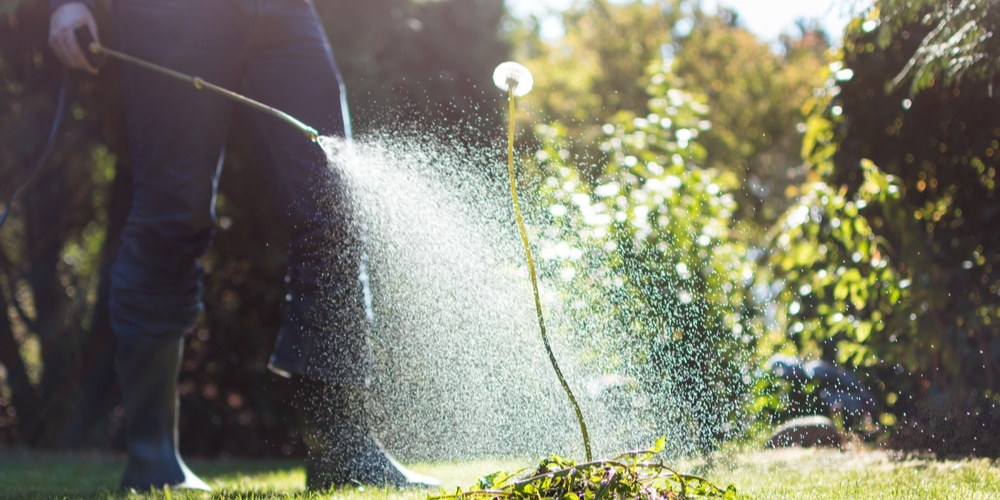Dandelions can be a pesky weed in the lawn or yard, mainly due to the fact that they tend to reseed themselves and regrow even when you cut down the whole plant. In figuring out how to kill dandelions, you may be wondering when is the best time to spray dandelions?
When Can You Spray Dandelions?
The humble Dandelion may be a vigorous grower and spreader, but the truth is that the plant isn’t considered an invasive species. However, you may find yourself scratching your head every time you try to eliminate dandelions in your yard, only to see them spring up and seemingly out of nowhere, with cheerful yellow blooms to match.
You may have tried a recommended herbicide but to no avail, but you may just be spraying at the wrong time.
Generally speaking, you will need to wait until the weed is at its ‘weakest’ and just before dandelion flowers spread their seeds. The best time to spray dandelions is during fall and as the weed is shedding its foliage in preparation for winter. The chemicals in the herbicide will be brought below the ground and to the roots, which will effectively kill the dandelions.
If you miss this window of opportunity, don’t worry- there’s another way to control the pesky weed from multiplying. Spray dandelions at the height of their flowering process and just before the wind blows out the seeds to other areas in your yard.
Dandelions typically bloom twice in a growing season- during spring and fall, which is somewhere between May to June, and around late August to September. Once you spot the buds appearing and the plant getting ready to bloom, have your herbicide spray handy.
Young dandelions and those that have about two or three sets of true leaves are also vulnerable to herbicide spray, so you can go ahead and apply it even if it’s past the fall or spring season.
When Should You Spray Dandelions?
Aside from getting the timing of the spray right, you should also take several measures so the herbicide works to its full extent.
In cooler climates, you can spray dandelions with herbicide from late morning to early evening to avoid dilution with atmospheric moisture. In warmer regions, you can wait until late afternoon or early evening to allow proper absorption into the ground.
It’s best to spray dandelions as they’re in an active growth stage, but not when there’s strong sunlight out. Rain can also dilute herbicides to a point that they’re no longer as effective, so avoid spraying after a shower or when you’re expecting rainfall.
Lastly, you should wait for a calm day where there isn’t as much wind blowing through your yard. Make sure to follow the manufacturer’s mixing or application instructions as stated on the label for optimal results.
Weedkillers are particularly effective versus dandelions as the solution moves straight down and to the plants’ roots, thereby killing them. Keep in mind that there are some products that are labeled ‘selective’, which means they target only specific broadleaf varieties such as dandelions. Alternatively, you can use corn meal-based organic products for fall spraying to achieve a similar effect.
How to Get Rid of Dandelions
Spraying dandelions with an herbicide may be better in fall than spring. You can typically cover all seedlings that have been established since the last growing season, and you won’t be as busy as you were in spring.
Remember, for an herbicide to be effective you must spray the whole area where dandelions are growing and saturate the whole weed with the solution.
Dandelions and other weeds are likely to be eliminated with careful and thorough spraying. If your lawn or yard is prone to weeds and dandelions, then you may have to reapply the herbicide every fall season to catch the growth and spread of these pesky plants.
As a side note, it’s recommended that you dedicate a spray tool or equipment for weed-killing purposes alone and not for general use.
Cleaning bottles and sprays that have weed-killing chemicals in them will be difficult to clean , and one mistake can cost you a year’s worth of harvest or a season of flowers. Also, make sure to wear protective clothing and wash your hands after every spraying session.

